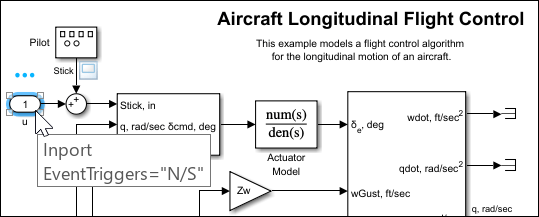Advisor.getExclusion
Syntax
Description
exclusionInfo = Advisor.getExclusion(modelName)
exclusionInfo = Advisor.getExclusion(modelName,filterType,entityIdentifier)filterType argument. The entity is specified by the
entityIdentifier argument.
Examples
Input Arguments
Output Arguments
Alternative Functionality
Model Advisor Exclusion Editor
You can also view exclusions by using the Model Advisor Exclusion Editor. To view exclusion information for a model, right-click in the Simulink canvas or right-click an entity and select Model Advisor > Open Model Advisor Exclusion Editor. For more information, see Exclude Blocks from Model Advisor Check Analysis.

